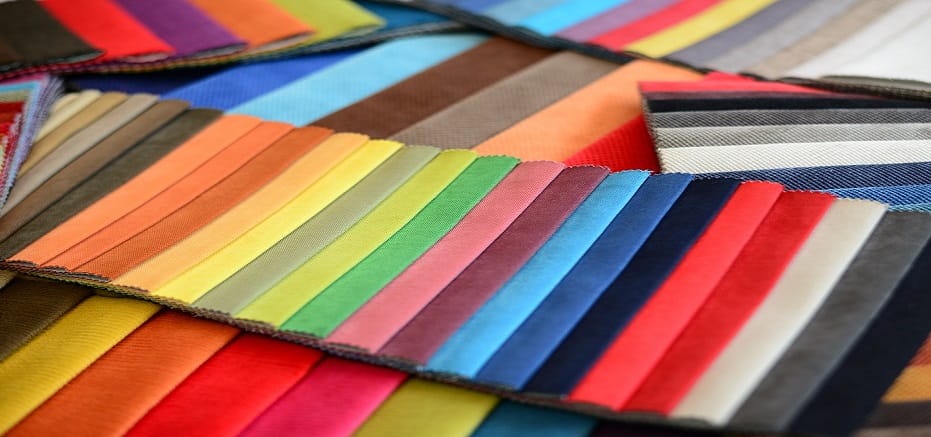Textiles & Fabrics
Fabrics (also known as textiles) are flexible materials that are commonly produced by weaving fibers together. The fibers can be natural, such as wool or cotton, or they can be artificial, such as nylon or polyester. Nearly all woven fabrics can be processed by laser cutting. Some fabrics, such as felt and fleece, can be processed by laser engraving and laser marking as well. One key application for fabric is decorating. In decorating, adhesive backed materials or other thermally activated materials are cut to shape and then heat pressed onto a fabric product to create logos, designs, letters, and numbers. Visit our Materials Suppliers List for fabric and textile vendors.
Types of Textiles and Fabrics
Types of Laser Processes
Lasers are playing an ever expanding role in material processing, from new product development to high volume manufacturing. For all laser processes, the energy of a laser beam interacts with a material to transform it in some way. Each transformation (or laser process) is controlled by precisely regulating the wavelength, power, duty cycle and repetition rate of the laser beam. These laser processes include the following:All materials have unique characteristics that dictate how the laser beam interacts and consequently modifies the material. The most common processes for textiles and fabrics are the following:
Laser Cutting of Textiles and Fabrics
The energy of a CO2 laser beam is easily absorbed by both natural and synthetic fabrics. This causes the portion of the fabric that is directly in the path of the laser beam to rapidly heat up and vaporize. If the laser power is sufficiently high, it will cut completely through the fabric. Most fabrics vaporize quickly when cut with a laser, resulting in clean, smooth edges with minimal heat affected zone. In certain cases laser cutting seals the edges, preventing the fabric from unraveling.
Laser Engraving of Textiles and Fabrics
The power of the CO2 laser beam can be limited so that it removes (engraves) material to a specified depth. The laser engraving process can be used to create intricate patterns and designs into the fabric surface. Laser engraving is most effective for non-woven fabrics (e.g. felt) or fabrics with a pile (e.g. fleece). Woven fabrics are not usually engraved because the engraving process would destroy the weave, causing the fabric to unravel.
Laser Marking of Textiles and Fabrics
Certain fabrics change color or hue when exposed to a CO2 laser beam. When the surface appearance changes without any material being removed, the process is termed laser marking. Laser marking can be used to produce visible patterns and designs on the fabric surface.
Combined Processes
The laser cutting, engraving, and marking processes described above can be combined without having to move or re-fixture the fabric.
General Fabrics and Textiles Laser System Considerations
Platform Size – Must be large enough to hold the largest pieces of fabric that will be laser processed or be equipped with Class 4 capability for processing larger pieces.
Wavelength – The 10.6 micron wavelength is absorbed well by nearly all fabrics and is the best choice for most fabric and textile laser cutting, engraving, and marking.
Laser Power – Must be selected based on the processes that will be performed. 25 to 150 Watts (CO2 laser) is best for fabric laser cutting, engraving, and marking.
Lens – A 2.0 lens is the best general process lens for fabric and textile laser material processing.
Cutting Table – Supports sheets of fabric or textiles for laser cutting.
Exhaust – Must have sufficient flow to remove the gasses and particles that are generated during laser process from the fabric laser cutting, engraving, and marking equipment.
Air Assist – Provides a jet of air near the focal point of the laser to help remove gasses and particles that are generated during fabric and textile laser cutting, engraving, and marking.
Environmental, Health and Safety Considerations for Fabrics and Textiles Laser Material Processing
Laser-material interactions almost always create gaseous effluent and/or particles. The effluent from fabric and textile laser processing will include various volatile organic compounds (VOCs) and should be routed to an exterior environment. Alternatively it may be treated with a filtration system first and then routed to an exterior environment. Fabric combustion is inherent to laser processing and may produce flames. Therefore fabric laser material processing should always be supervised.

